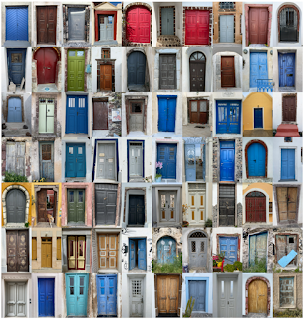
 Left: Seventy doors of Santorini in a composite image.
Left: Seventy doors of Santorini in a composite image.
Right: A view of Oia, Santorini.
The doors
I swore we would not run around our weekend in Santorini photographing doors, and yet that's what we did. And it was during this madness that I realized just how cutesy and clichéd photographing doors is. Precisely, the realization came when I was
in line to photograph a beautiful door in Oia, Santorini. So dear 3 readers, this may be our last door post! But seriously, we love doors. They are cool to look at and photograph.
We stayed on Santorini for two nights, based in
Firá (Thira). We were travelling in a group of four and rented a car for two days to get around the island. We hit several spots that would have been a lot harder to do by bus (slow) or taxi (expensive): Oia, Akrotiri, Kokkini Paralia – Red Beach, Pyrgos, Ancient Thera, Kamari – Black Beach.
The doors shown in the composite image in this post are from the places mentioned above. A couple of things to note about the doors:
- On some of the door thresholds or on adjacent walls you can see "eye charms", a depiction of an eye. These are to ward off the evil eye (mati). (Or to ward off people like us lusting after and photographing their doors?)
- Not all the doors are the famous blue color associated with the Greek islands, and particular the Cyclades. (More on the blue color below.)
- Not all the doors are beautiful. Ugly doors are cool too.
- Some of the doors are purposefully missing panels to allow you to peer through and see what's on the other side. This trick is particularly used where there might be a restaurant or hotel that just has a door on the street and the rest of the building is hidden below the street (on the crater's edge). Seeing through the door, you catch glimpses of the horizon, the ocean, and other islands. A nice effect.
The last time we were in Greece, it was in Crete and while there were definitely some whitewashed buildings and blue, it was much less prevalent. Crete isn't part of the Cyclades and has the architectural stamp of many cultures: Minoan, Greek, Roman, Venetian, Andalusian Arab, Byzantine, and Ottoman. See
12 Days in Crete and We Barely Scratched the Surface.
That blue and white
The views of Santorini and the
Cyclades Islands we've all seen are of white-washed buildings with blue domes, set in rugged landscapes. It's a provocative look - promoted by the Greek government and countless travel agencies and books alike - that seems to speak to some ancient tradition passed down through the generations. The images evoke the "nostalgic invocation of past paradise, when people could live in a microscale village." [6]
But alas, the truth about color is much more complicated and interesting in its own right.
Much has been written about the architecture of the Cyclades and we consulted only a tiny fraction of it to come up with our somewhat coherent account. From what we learned, yes, Cycladic Island architecture is a "thing" and that is exactly white-washed houses with blue accents.[1] During the age of pirates, the houses tried to camouflage themselves so as to not be seen and attract attention. Back then, houses were built of natural material and not painted at all typically. When piracy faded away, people started to get inventive with their house colors.
Enter onto the scene
Ioannis Metaxas (1871 – 1941), who gets elected as Greek Prime Minister in 1936 (and then quickly became a strongman). Metaxas passes a law in 1936 requiring that Cycladic houses be painted only these two colors for at least two reasons:
- There was a cholera outbreak. A "reason for Metaxas ordering all the island’s houses to be washed with lime was to protect themselves from the cholera that plagued Greece at the time. Lime was considered to be the most effective disinfectant, since chlorine was still not widespread back then." [2]
- It was a deliberate attempt to bring visual order to the islands. [2] The white and blue would match with the sky and white foam of the waves. Before the decree, houses were a jumble of colors. Being a strongman, Metaxas perhaps disliked disorder? Metaxas would have not liked Burano for its colors. (See Two Days in Burano - Colored House Collage.)
It's worth keeping a few other points in mind that make the story even more compelling or shall we say "colorful".
- First, the colors of the Greek flag are white and blue. A happy coincidence perhaps. The blue of the Cyclades is not the same as the blue used in the flag. In fact [5], the flag's blue shade isn't well specified at all.
- Secondly, the white and blue could be easily made from materials at hand. [4] Instead of white paint, an easy-to-make and cheap whitewash was used. You can make it by mixing lime (white dust), salt, and water in specific proportions. The blue color came from a cleaning agent called Loulaki (blue powder) found in every home in Greece at the time. The blue of the Cyclades is referred to as Loulaki blue.
- Whitewashing was not uncommon in the Cyclades. Villages would often be whitewashed in preparation for religious feasts like Christmas and Easter.
- The influence of modernist architects including Le Corbusier plays a part in the blue and white story, but how is not exactly clear. The 1933 International Congress of Modern Architecture brought the leading lights in architecture to Athens. [7] Part of the meeting included a cruise to the Aegean with a stop at Santorini. The architects 'seemed' to see a connection - if not a foundation - for modernist architecture in what they saw. [9] The heady modernist thoughts carried weight and may have influenced Metaxas' 1936 decree on color and order in the Cyclades. Le Corbusier, upon visiting Mykonos (part of the Cyclades) is reported to have said: "Whatever architecture has to say, it is said here."
When Metaxas died, houses in the islands started to revert back to natural colors. Maybe all the forced order needed a release? But then, putting the top back on the pressure cooker, came the
1967 Greek junta mandating that island houses should be blue and white to inspire patriotism.
Today, a cruel master, called tourism, keeps the blue and white regime: tourists want to see the blue and white architecture. The article
Live Your Myth in Greece: Towards the Construction of a Heritage Identity [6] points out that after the
1956 earthquake, the rebuilding styles were definitely affected by tourism and the desire of tourists to see certain architectural elements, even if those architectural elements were used out of context.
This takes us back to the start of our story waiting in line to photograph a door in Oia. Oia is considered one of the best examples of Cycladic architecture.
References:
Photo Essay
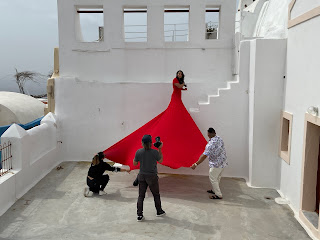
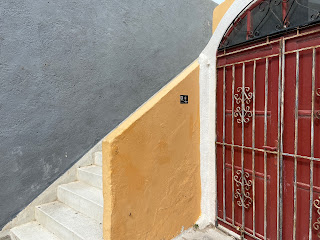
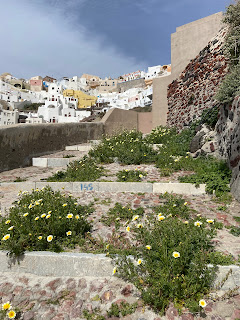 Left: A photo shoot in Oia Santorini.
Left: A photo shoot in Oia Santorini.
Center: Three intersecting colors in Oia Santorini.
Right: Steps with flowers leading from Amoudi Bay to Oia Santorini.


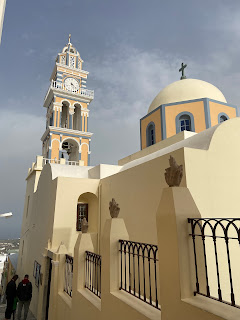
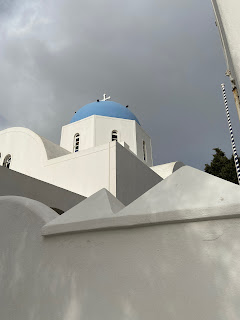

Different churches towers and comes of Santorini. From left to right: 1) Akrotiri Santorini - St. Epifanios Traditional Orthodox Church, 2) Church of St. Mark the Evangelist, Firostefani 3) Belltower and dome of Saint John the Baptist Catholic Church in Thira Santorini, 4) Firostefani Santorini - Church of Saint Gerasimos, 5) Fira Santorini - Holy Church of Agios Minas.


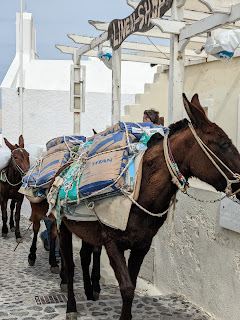
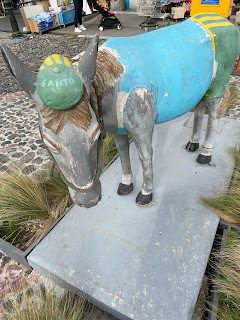
Left: View of Amoudi Bay Santorini.
Center left: Octopus left to dry in the sun in Amoudi Bay.
Center right: Donkey traffic in Oia Santorini.
Right: Santo a donkey statue in Fira Santorini.

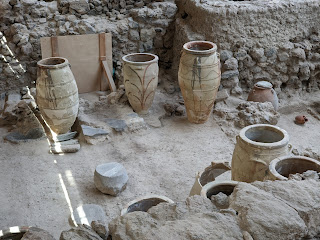
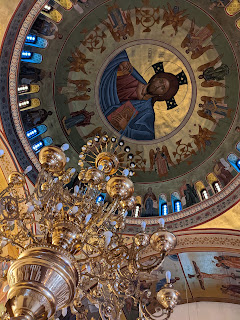
Left: Archeological ruins at Akrotiri, Santorini.
Center: Vases at the Archeological site of Akrotiri, Santorini.
Right: Candlemas Holy Orthodox Metropolitan Cathedral - Thira Santorini.
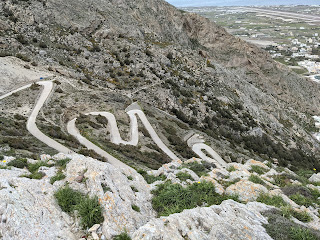

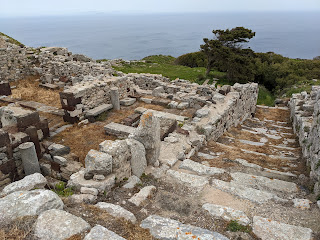
Left: Archeological site of Ancient Thera (Santorini) - road leading up to entrance.
Center and right: Archeological site of Ancient Thera (Santorini) – views east toward Anafi.




Left: Donkeys waiting for tourists on the Karavolades Stairs.
Center left and center right: Karavolades Stairs - from Thira Santorini to the old harbor.
Right: Thira Santorini - Old Harbor at the bottom of the Karavolades Stairs.

.JPG)
%20in%20Santorini.JPG)
Left: Black pebbles of Kamari Beach Santorini.
Center: Late afternoon at Kokkini Paralia (Santorini).
Right: Red cliffs of Kokkini Paralia (Red Beach) in Santorini.
%20Akrotiri%20village%20in%20Santorini.jpg)
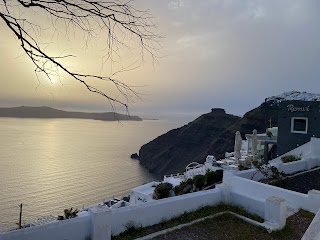

Left: Sunset from (modern) Akrotiri village in Santorini.
Center: Sunset from Firostefani Santorini.
Right: Sunset over the caldera from Thira Santorini.
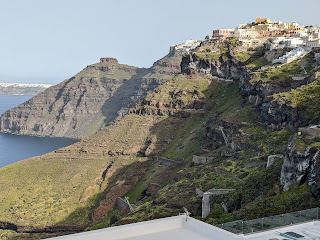
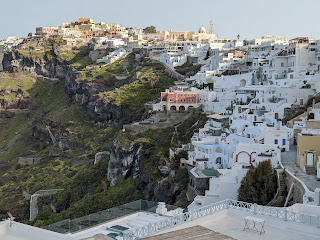

Left: The cliffs below Thira Santorini.
Center: Thira Santorini, western part - crater rim.
Right: Eye graffiti on the Karavolades Stairs.


%20along%20crater)
Left: The stairs of Saint John the Baptist Catholic Church in Thira Santorini.
Center: View of the Santorini caldera later afternoon.
Right: View of Thira (Fira) Santorini along crater's edge.



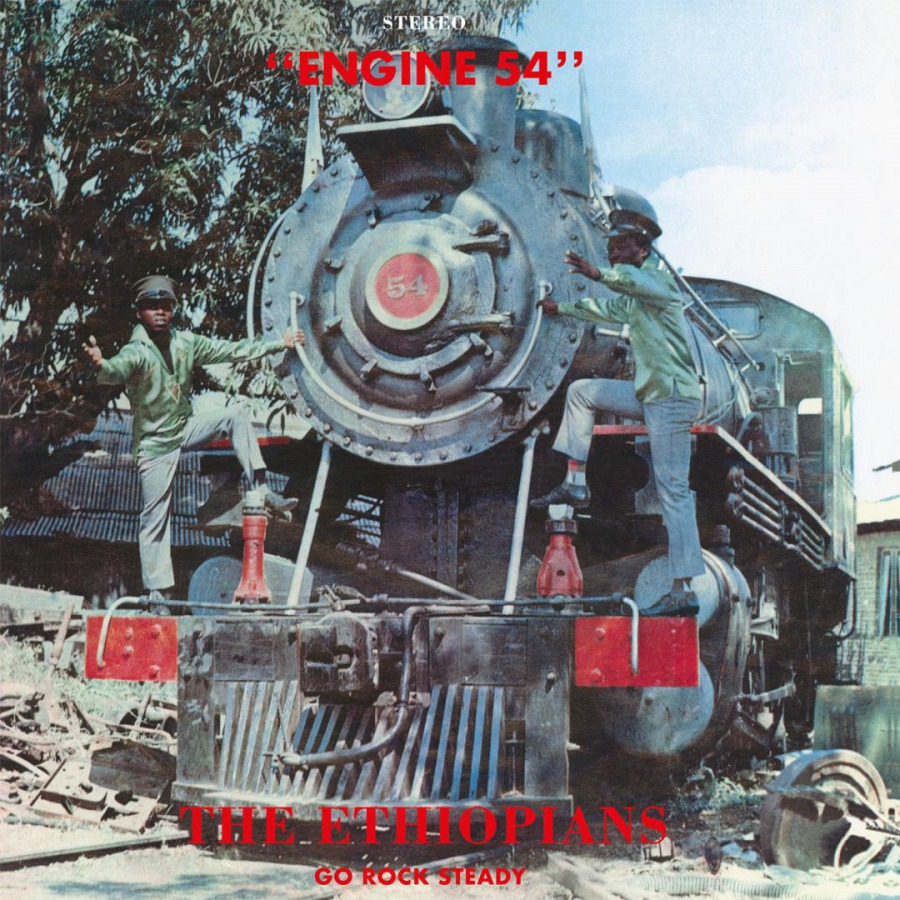





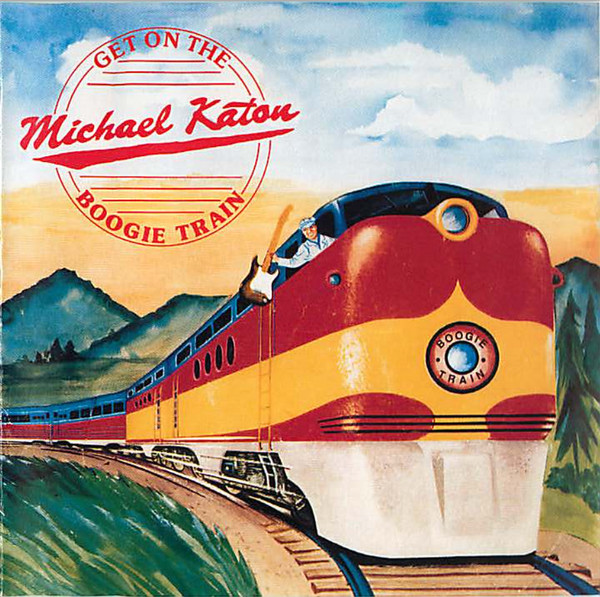
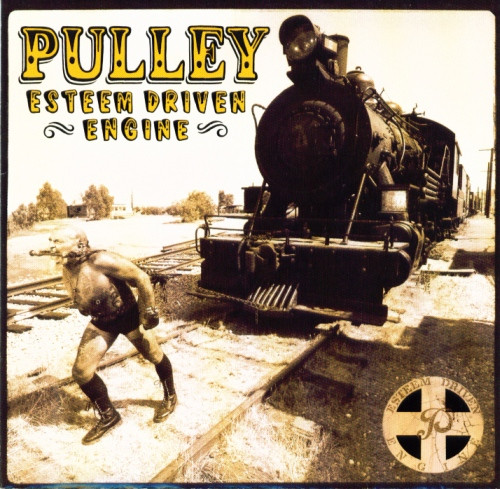








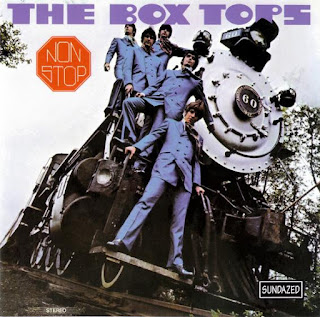


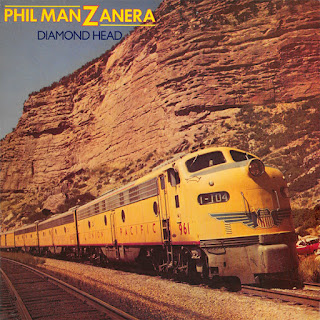



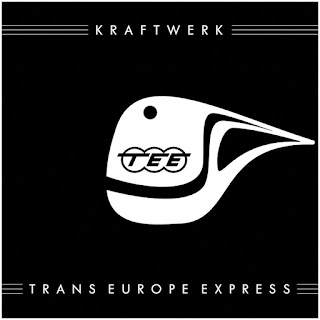








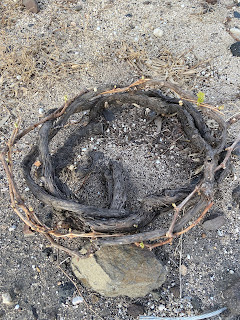
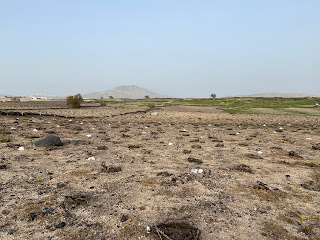

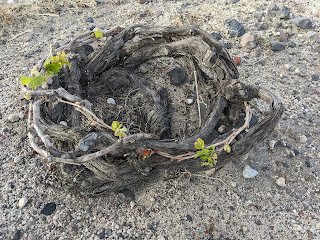


























.JPG)
%20in%20Santorini.JPG)
%20Akrotiri%20village%20in%20Santorini.jpg)







%20along%20crater)